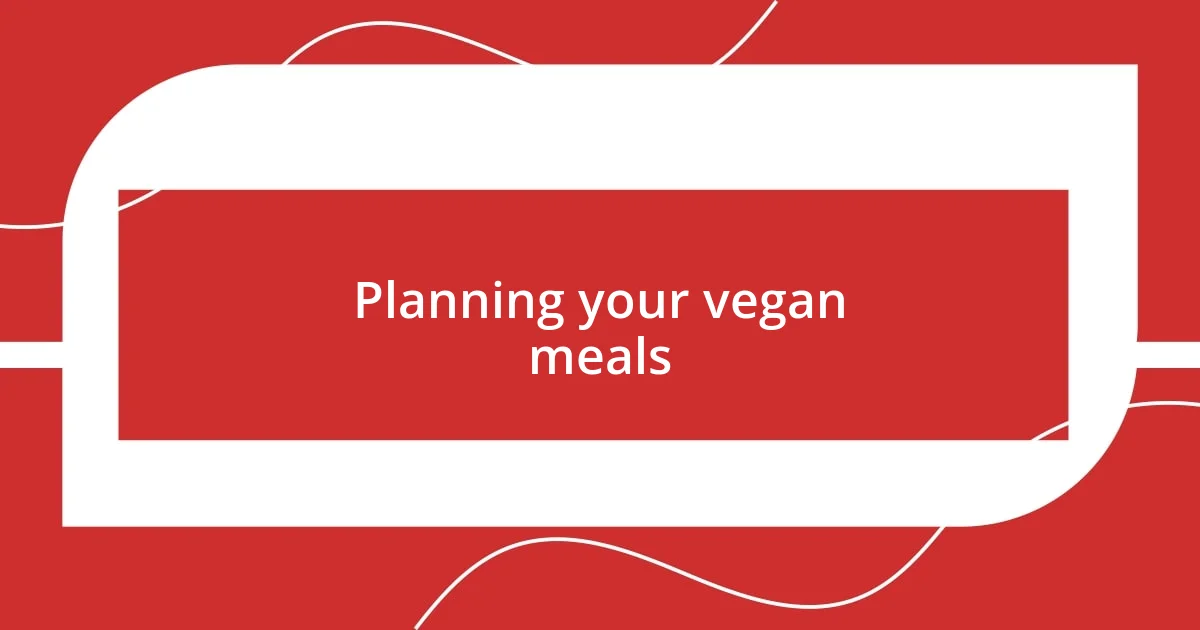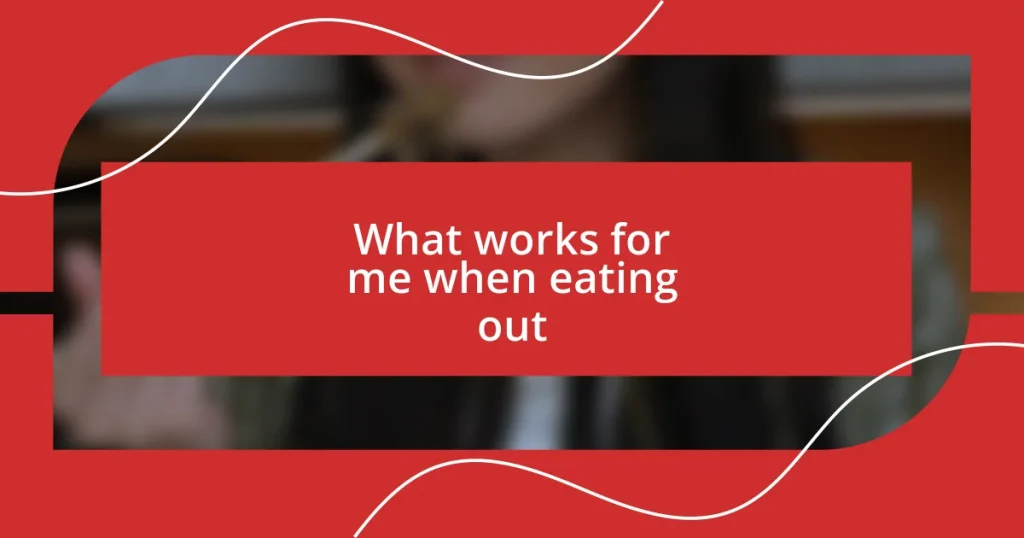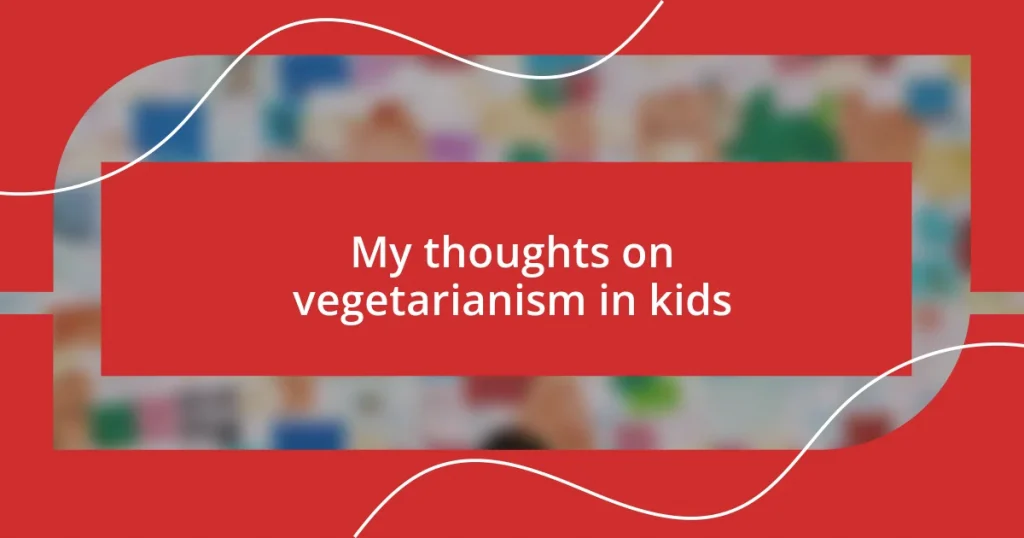Key takeaways:
- Transitioning to a vegan diet involves understanding nutritional balance, including protein, iron, calcium, and vitamins like B12.
- Meal planning and prepping are vital for success, helping to maintain variety and prevent unhealthy impulse eating.
- Overcoming social challenges and finding community support enhances the long-term sustainability of a vegan lifestyle.

Understanding vegan diet basics
A vegan diet fundamentally excludes all animal products, meaning I embraced a lifestyle that revolves around fruits, vegetables, grains, nuts, and seeds. At first, I was amazed by how vibrant the colors of these foods are, and it felt like I was rediscovering the joys of eating. Have you ever noticed how much more engaging a plate of diverse plant-based food looks compared to a standard meat-based meal?
When I made the switch, it was essential for me to understand the nutritional balance. I learned that while it’s easy to consume copious amounts of carbs and fats in a vegan diet, ensuring adequate protein intake through legumes, tofu, or tempeh became a priority for me. It was a learning curve, but seeing how energized I felt after a well-rounded, plant-based meal made the effort worthwhile.
As I delved deeper, I encountered the concept of ethical veganism, which resonated profoundly with me. Learning about the impact of animal agriculture on the environment stirred a mix of emotions—regret for my past choices and a sense of purpose moving forward. It’s fascinating to realize that our food choices can align with our values, don’t you think?

Planning your vegan meals
Planning your meals is crucial when transitioning to a vegan diet. I vividly remember the first week I tried to plan my meals; it felt chaotic at times. I started with a simple approach: I dedicated Sundays to plan my meals for the week. This not only eased the weekday rush but also helped me avoid impulse purchases that usually led to unhealthy options. Have you ever stood in the grocery aisle unsure of what to buy? Having a plan transforms that uncertainty into confidence.
As I progressed, I began experimenting with meal prepping. I would cook larger batches of grains, beans, and vegetables to create versatile bases for my meals throughout the week. I found that having containers filled with pre-cooked ingredients in my fridge made it incredibly easy to throw together quick plates—just like assembling a puzzle! This habit saved me time and kept my meals diverse and exciting, which I believe is essential in maintaining a commitment to a vegan lifestyle.
To enhance my planning, I realized the importance of keeping a variety of cuisines in mind. Mixing flavors and textures not only kept things interesting but also helped me discover new favorites. For instance, I’d craft Mediterranean dishes one week and switch it up with spicy Asian-inspired meals the next. This exploration kept my enthusiasm alive and made my journey much more enjoyable.
| Meal Planning Tips | Examples |
|---|---|
| Use a Variety of Ingredients | Fruits, vegetables, grains, nuts, and legumes |
| Dedicate Time for Meal Prep | Choose a day (like Sunday) for cooking |
| Explore Different Cuisines | Mediterranean, Mexican, Asian, etc. |

Nutritional considerations for vegans
My experience with transitioning to a vegan diet revealed just how crucial it is to pay attention to nutritional considerations. During my early days, I was surprised to discover that key nutrients could easily be overlooked amidst the excitement of all the new foods. For example, I had to educate myself on vitamin B12, which is vital for nerve function and energy levels. Initially, I felt a bit anxious knowing that I had to supplement my diet or carefully choose fortified foods to ensure I was getting enough of this essential vitamin.
As I journeyed further into this vegan lifestyle, I became increasingly mindful of my iron and calcium intake as well. Here are a few considerations that helped me balance my nutrition:
- Protein Sources: Incorporate legumes, tofu, tempeh, and seitan into meals.
- Vitamin B12: Look for fortified plant milks or take a supplement.
- Iron: Include lentils, chickpeas, and seeds with vitamin C-rich foods to enhance absorption.
- Calcium: Opt for fortified plant-based milks or leafy greens like bok choy and kale.
- Omega-3 Fatty Acids: Add chia seeds, flaxseeds, and walnuts to your diet for healthy fats.
Every single adjustment brought a sense of empowerment; actually seeing my meals packed with color and nutrients filled me with a sense of accomplishment. I remember tasting a rich lentil stew with spinach and feeling not only nourished but alive. It was then that I realized how deeply connected our food choices are to our well-being. There’s something quite magical about feeling in tune with your body as you fuel it with thoughtful, wholesome ingredients, don’t you think?

Overcoming challenges during transition
Navigating the transition to a vegan diet can be quite challenging, and I encountered my fair share of hurdles along the way. One evening, I was at a friend’s dinner party, surrounded by delicious-looking platters, and I suddenly felt isolated. The anxiety of being the “picky eater” weighed on me. But instead of shying away, I decided to bring my own dish to share—a vibrant quinoa salad bursting with colors. It sparked curiosity, and I ended up having great conversations about my choices, turning a seemingly awkward situation into a chance to educate and connect. Have you ever turned a potentially uncomfortable moment into an opportunity?
Another significant challenge was learning how to eat out without feeling overwhelmed. I remember my first trip to a restaurant after transitioning. I stared at the menu, frustrated by the limited vegan options, wondering how to enjoy the experience while staying true to my commitment. This is when I found empowerment in communication—scanning the menu for ingredients and asking the staff about modifications. I realized that each question I asked not only educated me but helped make veganism more visible in places where options seemed scarce.
Lastly, let’s not forget the social pressures that sometimes accompany dietary changes. I distinctly remember family gatherings where everybody dug into their favorite dishes while I nervously navigated my own plate. Instead of dwelling on those awkward moments, I embraced them by sharing my experiences openly. After all, this transition was partly about my journey, and inviting others into that space created understanding and support. Have you experienced a similar urge to educate those around you about your choices? It can truly deepen connections and foster a supportive environment, turning challenges into shared discussions.

Maintaining long-term vegan habits
Maintaining a long-term vegan diet requires constant commitment, especially when life gets busy. I’ll never forget the time I found myself reaching for a piece of chocolate cake at a family gathering. Instead, I paused, reflecting on how far I’d come. I decided to bring my own dessert next time—a rich, chocolaty avocado mousse. Not only did it satisfy my sweet tooth, but it also allowed me to share something delicious and vegan with everyone. Have you ever found a way to make your choices shine in a social setting?
Meal prep became my lifeline for staying on track. On weekends, I set aside a few hours to whip up homemade bean chili and sautéed veggies. It’s incredible how having wholesome meals ready to go can ease the stress of daily life. I remember the chaos of trying to choose something healthy while running late for work, and how often it led to poor last-minute choices. Now, I simply grab a jar of my prepped chili and pair it with brown rice. It feels great knowing I’m fueling my body with intention. Isn’t it empowering to have choices that align with your values?
Lastly, staying motivated long-term requires community. Joining a local vegan group was a game changer for me. I still recall my first meet-up; I was nervous but excited to connect with others who shared my passion. Sharing recipes, discovering new products, and even attending potlucks made my vegan journey richer. There’s something uplifting about collective energy, don’t you think? Surrounding myself with others who encourage and understand my lifestyle has made maintenance feel less daunting and so much more enjoyable.















